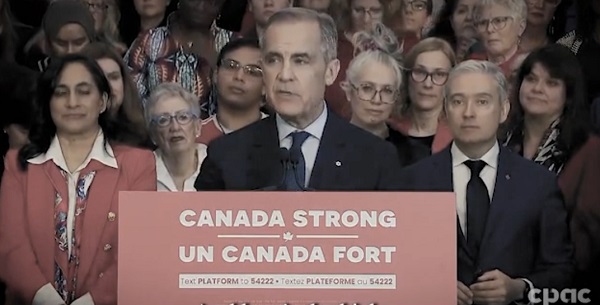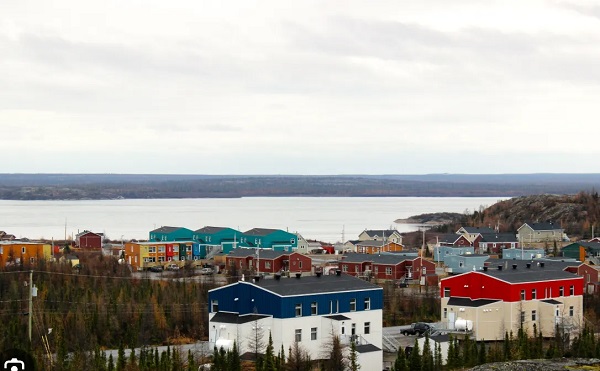Opinion
What is next for transporting crude oil? Sea, rail, truck, pipes and now air? Fact or fiction?

Investing in crude oil transportation is an expensive, a controversial and a political game, especially when it comes to shipping to tide water.
Private corporations around the globe are investing in bulk tankers to ship crude oil across the oceans, we just need to get it to tide water.
Federal Liberal government has spent $4.5 billion on a current pipeline. With a population of 36.71 million people, means that every Canadian has spent by proxy $122.60 on a pipeline. We could spend another $9 billion twinning the pipeline to triple the flow of crude for a total $13.5 billion or $367.75 per Canadian.
Provincial NDP government of Alberta is investing $3.7 billion on rail cars to ship oil to tide water. Alberta’s population is 3.7 million people which means every Albertan will be spending $863.28 on rail cars to ship oil.
With tongue firmly in cheek I must ask if the Conservatives either provincially or federally will out do the competition and invest in the last option; air. They could invent or invest in bulk tanker aircraft. They have planes that fuel airplanes mid-flight so why not fly crude oil to tidewater?
Every Albertan is committed to $1231.00 in shipping more oil so what’s another $1269.00 to make it $2500. It’s only money, and I am sure the politicians can find a way to subsidize the top 1%, so they won’t suffer too badly. They could cut funding to seniors, health, education and other programs the average Albertan uses. It would cover all the bases, so what will the Conservatives bring to the game? We’re waiting.
Bruce Dowbiggin
Is HNIC Ready For The Winnipeg Jets To Be Canada’s Heroes?

It’s fair to say everyone in hockey wanted the Winnipeg Jets back in the NHL. They became everyone’s darlings in 2011 when the Atlanta Thrashers, the league’s second stab at a franchise in Georgia, were sold to Canadian interests including businessman David Thomson. (Ed.: Gary Bettman’s try number three in Atlanta is upcoming.).
Yes, the market is tiny. Yes, the arena is too small. Yes, Thomson’s wealth is holding back a sea of inevitability. But sentimentalists remembering the Bobby Hull WHA Jets and the Dale Hawerchuk NHL Jets threw aside their skepticism to welcome back the Jets. The throwback uniforms with their hints at Canada’s air force past were an understated nod to their modest pretensions. It was a perfect story.

The question now, however, is will the same folks get dewey-eyed about the Jets if they become the first Canadian team to win the Stanley Cup since (checks his cards) Montreal and Patrick Roy did it in 1993. It would be helpful in this election year if something were to bind a nation torn apart by politics. The Gordie Howe Elbows Up analogy is more than shopworn, and Terry Fox can only be resurrected so often. So a Cup win might be a welcome salve.
But the approved script has long dictated that the Canadian team to break the schneid should be one of the glamour twins of the NHL’s Canadian content, the Edmonton Oilers or the (gulp) Toronto Maple Leafs. The Oilers and their superstar Connor McDavid barely lost out last spring to Florida while the Leafs, laden with superstars like Auston Matthews and William Nylander, are overdue for a long playoff run.
Hockey Night In Canada positively pants for the chance to gush over these two squads each week. When was the last time Toronto played an afternoon game so HNIC could showcase the Jets? Like, never. Same for the Oilers, who with their glittering stars like McDavid Leon Draisaitl and Ryan Nugent Hopkins are the primary tenants of the doubleheader slot, followed by Calgary. Winnipeg? We’ll get to them.

But there’s going to be no ignoring them in the spring of 2025. The Jets in the northern outpost in Manitoba were the top team in the entire league in 2024-25. They’ll comfortably win the Presidents Cup as the No. 1 squad and have home-ice advantage throughout the playoffs. They have the league’s best goalie in Connor Hellebuyck (an American) and a stable of top scorers led by Kyle Connor and Mark Schiefele. Because Winnipeg is on a lot of No Trade lists, they have built themselves through the draft and thrifty budgeting.
But will the same people who swooned over the Jets in 2011 now find them as adorable if they ruin the Stanley Cup plot lines of the Oilers, Leafs and Ottawa Senators? Will the fans of Canadian teams in Vancouver, Calgary and Montreal not making the postseason take the Jets to their hearts or will they be as phoney as the Mike Myers commercials for the Liberals?
In addition, the Jets will be swamped by national media should they proceed through the playoffs. It’s one thing to carry the expectations of Winnipeg and Manitoba. It’s another to foot the bill for a hockey crazy county. We remember Vancouver’s GM Mike Gillis during the Canucks 2011 Cup run bemoaning the late arrivers of the press trying to critique his team as they made their way through the playoffs.
It will be no picnic for the Jets, however strong they’ve been in the regular season. No one was gunning for them as they might for the Oilers or Leafs. They will now get their opponents’ best game night after night. Hellebuyck has been a top three goalie in the NHL for a while, winning the Vezina Trophy, but his playoff performance hasn’t matched that of his regular-season version.
Already the injury bug that sidelines so many Cup dreams is biting at the Jets. Nikolaj Ehlers collided with a linesman in Saturday’s OT win in Chicago. Defenceman Dylan Samberg is also questionable after stopping a McDavid slap shot with his leg. A rash of injuries has ended the run of many a worthy Cup aspirant in the past. Can Winnipeg’s depth sustain the churn of seven weeks of all-out hockey?
As always for the small-market Jets time is of the essence. Keeping this core together is difficult with large markets lusting after your players. With the NHL salary cap going up it remains a chore to keep their top players. Schiefele and Hellebuyck are tied up longterm, but 40-goal man Connor is a UFA after next season while Ehlers is not signed after this season. Young Cole Perfetti will be an RFA in 2026. Etc.
So how much do Canadians love the Jets if they sneak in and steal the hero role by winning a Canadian Cup? Lets see Ron MacLean pun his way through that one.
Bruce Dowbiggin @dowbboy is the editor of Not The Public Broadcaster A two-time winner of the Gemini Award as Canada’s top television sports broadcaster. His new book Deal With It: The Trades That Stunned The NHL And Changed Hockey is now available on Amazon. Inexact Science: The Six Most Compelling Draft Years In NHL History, his previous book with his son Evan, was voted the seventh-best professional hockey book of all time by bookauthority.org. You can see all his books at brucedowbigginbooks.ca.
2025 Federal Election
Campaign 2025 : The Liberal Costed Platform – Taxpayer Funded Fiction


 Dan Knight
Dan Knight
Carney is trying to redefine the deficit by splitting it into two categories: “operating” and “capital”—a little trick borrowed from UK public finance to confuse voters and dodge political accountability. It’s not something Canada has ever used in federal budget reporting, and there’s a reason for that: it’s misleading by design.
Mark Carney, the unelected banker-turned-savior of the Liberal Party, stood on a stage at Durham College on April 19 and did what professional economic grifters do best—he smiled politely, gestured at some numbers, and attempted to sell Canadians on a $130 billion illusion.
He called it a “costed platform.” What it really was, was a pitch deck for national decline—a warmed-over slab of recycled Trudeauism, backed by deficit delusion and framed as “bold leadership.”
And yes, the numbers are real. Terrifyingly real.
The Liberal platform promises $130 billion in new spending over four years, while running deficits of $62.3 billion this year, $59.9 billion next year, and still sitting at $48 billion in the red by 2028. To balance all of this out? A magical $28 billion in “unspecified cuts.” Not outlined. Not itemized. Just floated in the air like a promise from a door-to-door vacuum salesman.
Carney, in his perfectly rehearsed banker tone, assures us it’s not spending. No, it’s “investment.” Which is hilarious, because that’s exactly what Justin Trudeau said when he kicked off a decade of reckless spending, capital flight, and housing inflation. Carney has simply pulled off the Liberal magic trick of rebranding debt as growth.
But this isn’t just fiscal mismanagement. This is coordinated, high-level dishonesty.
Let’s be clear: Mark Carney is not new to any of this. He isn’t some white knight riding in to clean up Trudeau’s mess. He is the mess. He was Trudeau’s economic consigliere. He sat in the backrooms when they passed Bill C-69, which throttled Canada’s energy sector. He championed ESG, oversaw the implosion of GFANZ (his climate finance alliance), and helped drive $500 billion in investment out of this country.
Now he’s back—wearing a new title, making the same promises, using the same playbook. Only this time, he’s brought a spreadsheet.
In one breath, Carney says we need to “diversify trade.” In the next, he’s counting on $20 billion in one-time countertariff revenues to prop up his platform. In one paragraph, he says Canada will be “fiscally responsible.” In the next, he admits the deficit will nearly double this year. He claims he’ll spend 2% of GDP on defense—but not until 2029, because, of course, there’s no urgency when you’re protected by the American military umbrella you secretly resent.
And his housing plan? If you thought things couldn’t get worse than Justin Trudeau’s housing disaster, buckle up. Carney’s solution is modular housing—yes, government-subsidized, prefabricated micro-boxes dropped onto federally controlled land.
Mark Carney will never live in modular housing. His children will never live in modular housing. But for you, the taxpayer? That’s the future he envisions—managed housing, managed economy, managed speech, managed life.
He’s not here to lift Canadians up. He’s here to lock them down—into a permanent, bureaucratically engineered middle class, dependent on state subsidies and grateful for whatever dignity Ottawa hasn’t yet taxed away.
And when asked how he’ll find the $28 billion in cuts needed to make this plan remotely plausible, his answer was priceless:
“Technology, attrition, and a review of consultant contracts.”
Translation: “We don’t know.”
And here’s where the grift goes full throttle—the accounting scam.
Carney is trying to redefine the deficit by splitting it into two categories: “operating” and “capital”—a little trick borrowed from UK public finance to confuse voters and dodge political accountability. It’s not something Canada has ever used in federal budget reporting, and there’s a reason for that: it’s misleading by design.
Here’s how it works: Carney claims that by 2028, the government will run an “operating surplus.” Sounds responsible, right? Like the books are balanced?
Wrong.
Because even while he’s claiming an “operating surplus,” the federal government will still be running a $48 billion deficit overall. That’s real debt—borrowed money the country doesn’t have.
So how does he square the circle?
Simple: he relabels infrastructure and program spending as “capital investment”, pushes it off to the side, and tells you the main budget is in good shape.
But guess what?
You still owe the money.
The debt still grows.
And interest payments still stack up.
It’s like maxing out your credit card, then saying “no problem—I only overspent on long-term purchases, not day-to-day expenses.”
Try that line with your bank. Let me know how it goes.
This isn’t honest budgeting. It’s spreadsheet manipulation by a guy who knows how to massage the optics while the house burns down.
And let’s not forget who we’re talking about here.
This is the man who moved his financial headquarters to New York while lecturing Canadians about economic sovereignty.
This is the guy with a Cayman Islands tax haven, who built his fortune offshore and now wants to manage your budget while shielding his own.
This is the architect of GFANZ—the so-called climate finance alliance—that imploded under his leadership. The same alliance that saw JPMorgan, Citigroup, and the Big Six Canadian banks bail because Carney couldn’t keep the cartel together without running afoul of antitrust laws.
This is the same man mentioned in Marco Mendicino’s Emergencies Act texts—the man who said, Move the tanks on the protesters.
That’s right.
He wasn’t calling for dialogue. He wasn’t calling for democracy. He was calling for force—on peaceful Canadians exercising their rights. That’s who this is.
So let’s drop the fantasy.
Mark Carney isn’t here to save you.
-

 Alberta12 hours ago
Alberta12 hours agoProvince to expand services provided by Alberta Sheriffs: New policing option for municipalities
-

 Bruce Dowbiggin7 hours ago
Bruce Dowbiggin7 hours agoIs HNIC Ready For The Winnipeg Jets To Be Canada’s Heroes?
-

 2025 Federal Election9 hours ago
2025 Federal Election9 hours agoCSIS Warned Beijing Would Brand Conservatives as Trumpian. Now Carney’s Campaign Is Doing It.
-

 2025 Federal Election11 hours ago
2025 Federal Election11 hours agoNo Matter The Winner – My Canada Is Gone
-

 Alberta10 hours ago
Alberta10 hours agoMade in Alberta! Province makes it easier to support local products with Buy Local program
-

 Health8 hours ago
Health8 hours agoHorrific and Deadly Effects of Antidepressants
-

 2025 Federal Election2 days ago
2025 Federal Election2 days agoThe “Hardhat Vote” Has Embraced Pierre Poilievre
-

 COVID-192 days ago
COVID-192 days agoThe Pandemic Justice Phase Begins as Criminal Investigations Commence




